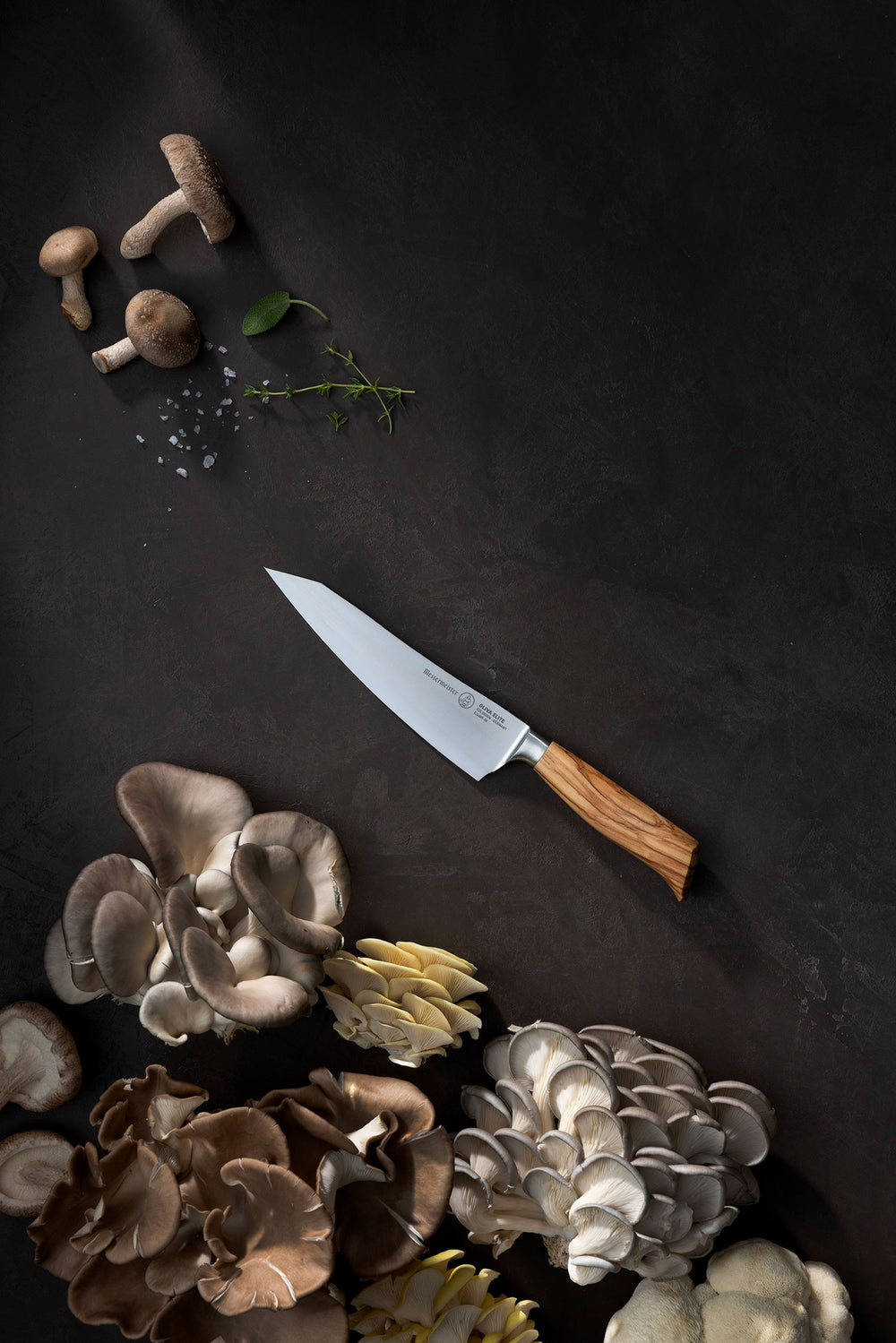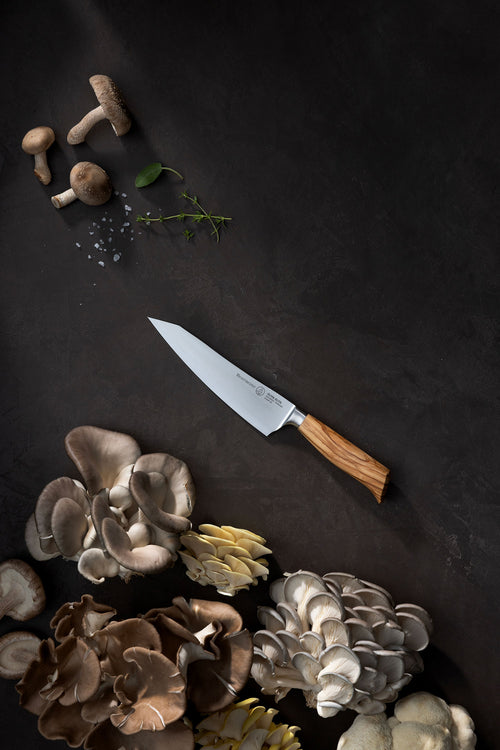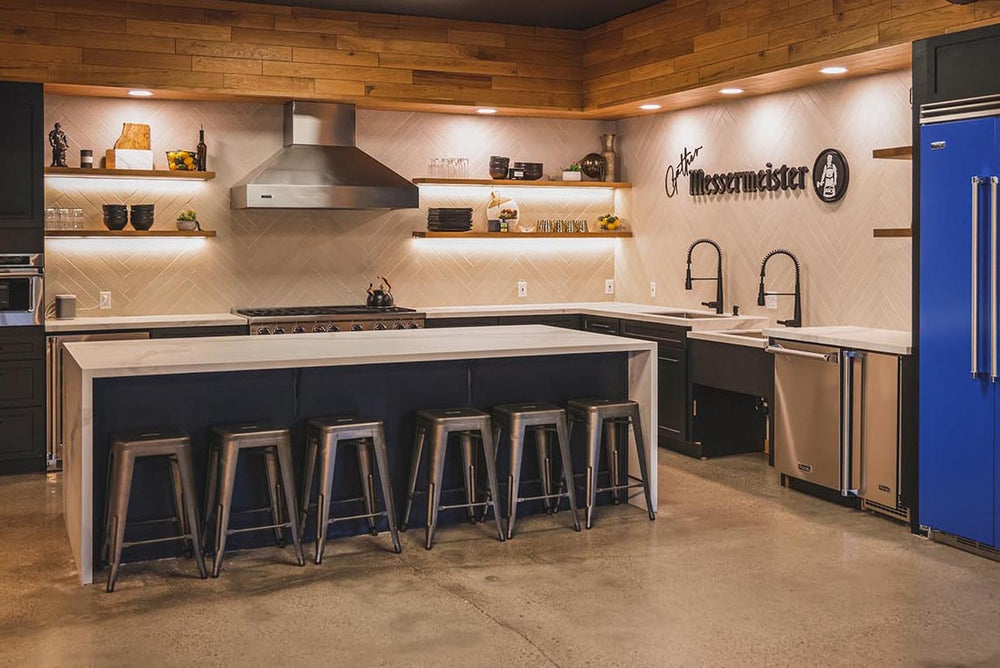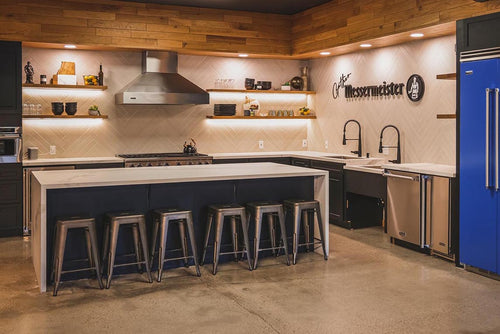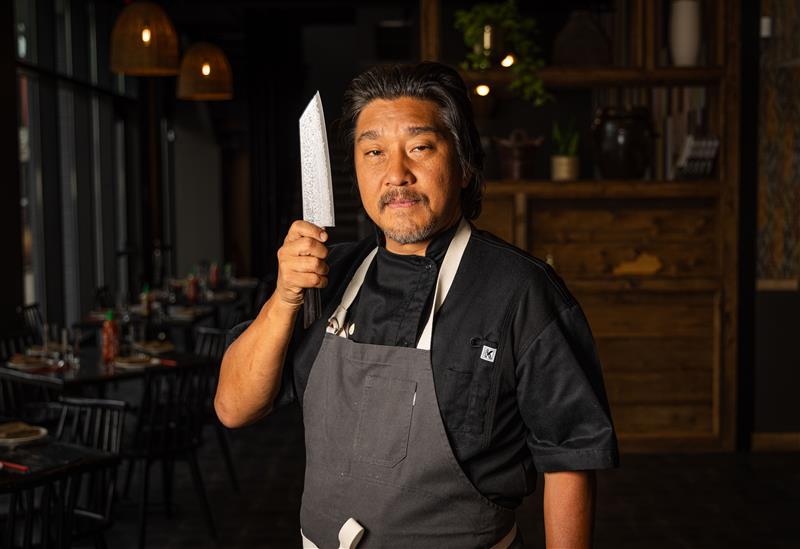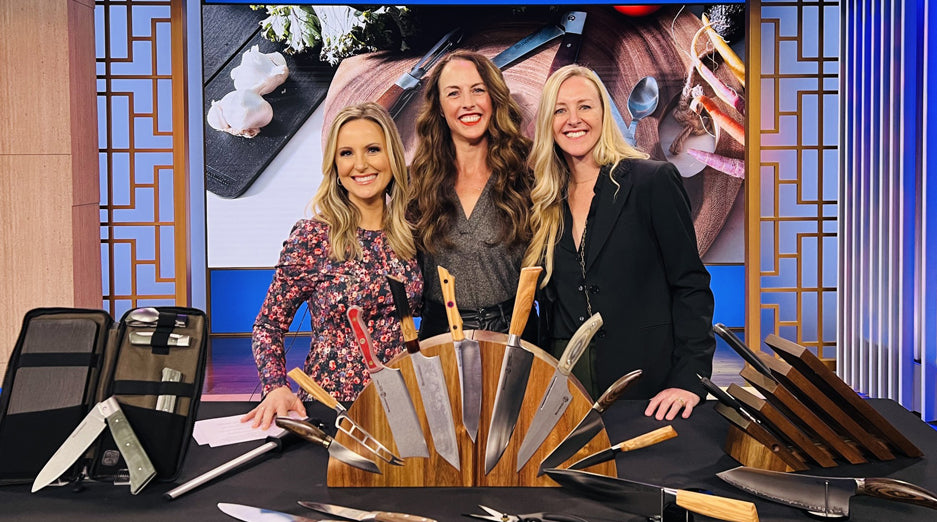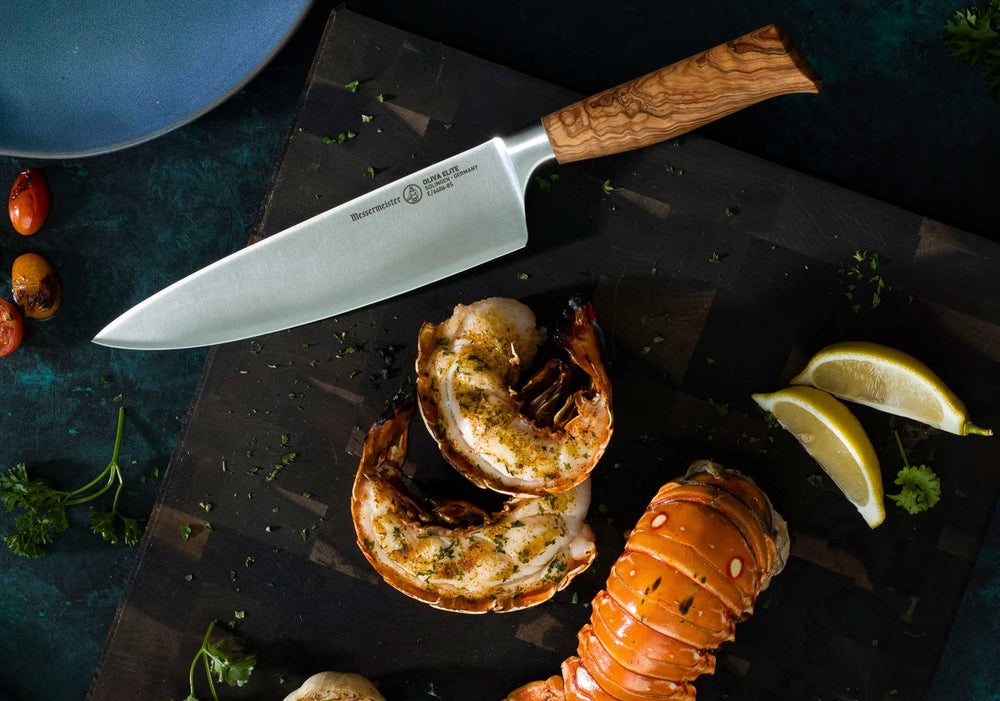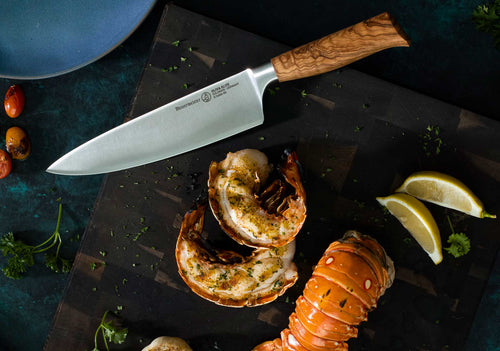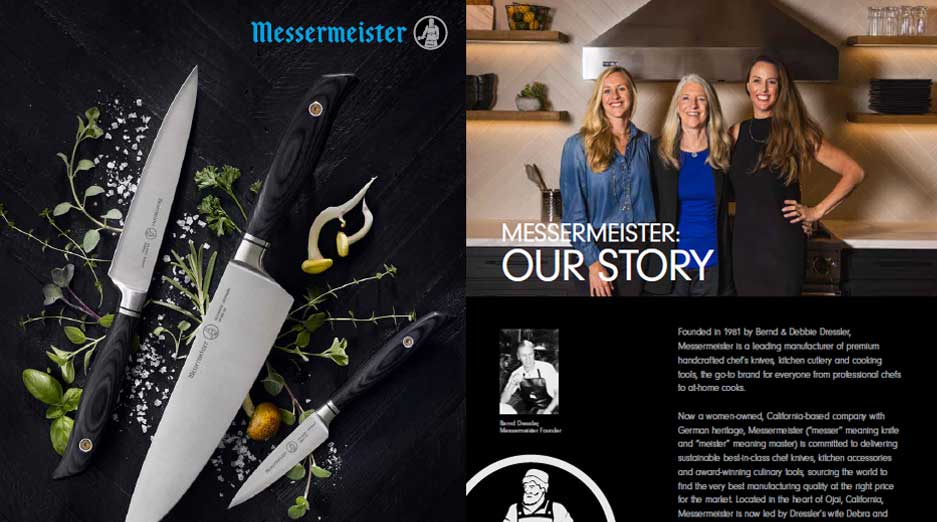Handle comfort depends on shape, weight, and material, leading many chefs to choose wood handles for their natural feel. Wood offers a bevy of superior features, but it does require a bit more care and upkeep.
So how do you know if a wood knife handle is right for you? Consider the pros and cons based on your lifestyle and cooking needs.
Pros of Wood Knife Handles
Exceptional Comfort and Grip
Wood handles provide an exceptional cooking experience because of the warmth and natural, weighty hand-feel that many chefs find more comfortable than metal or plastic. Wood also offers superior grip, even when slightly wet, making it ideal for professional kitchens or knives used in fast-paced environments.
Natural Beauty and Timeless Appeal
Many chefs choose wood-handled knives because they are visually stunning. The natural, warm features have a timeless appeal, and since wood has natural grain, each handle is unique with its own movement and character. There are many varieties of high-quality wood to choose from, which also allows you the opportunity to match your knife’s aesthetics to your personal style, a stand-out feature of wood handles.
If design and customization are what you’re going for, Messermeister’s Custom Collection offers a range of wood resin handles and a Mod Kit Handle Hardware System, allowing for complete personalization of your knife handle and hardware.
Durability and Longevity
When properly cared for, premium wood handles can last decades. High-quality woods, like the Mediterranean Olive Wood used in the bestseller Olivia Elite 8” Chef’s Knife, is a perfect example of the blend of elegance and strength that embodies luxury craftsmanship.
If solid wood isn’t your thing, Messermeister’s Avanta Forged features pakkawood, a composite of hardwood and resin, provides exceptional stability and durability while maintaining the classic wood aesthetic.
All of the premium woods used in Messermeister’s handcrafted knives are highly durable and, with proper maintenance, can last long enough to become cherished heirlooms.
Repairability and Sustainability
Unlike synthetic materials, wood handles can be repaired. Minor cuts, dents, or scratches can be gently sanded, and, with a little oil and polish, they can be completely restored and brought back to life.
Cons of Wood Knife Handles
Sensitive to Moisture
While wood handles may be aesthetically pleasing, they do require a bit of extra care. Because of the natural material’s sensitivity to moisture, wood handles can be damaged with excessive exposure to moisture. While quality knives should always be hand-washed, it’s especially important with wood handles, which could crack or swell under excess moisture or heat.
Maintenance Required
Over time, exposure to water or excessive use can loosen the fasteners, requiring a bit of handiwork to re-tighten the grip. With a bit of periodic oiling and tightening, you can ensure your high-end knives remain as strong and beautiful as the day you bought them.
Prone to Chipping or Splitting
With beauty comes a bit of vulnerability. Wood’s natural feature is more prone to chipping or splitting if dropped or exposed to extreme temperatures. While stabilized and resin-infused woods like Pakkawood offer more durability, all wood handles benefit from mindful care and a bit more gentle handling.
The Perfect Balance
Ultimately, the best handle choice is the one that feels like an extension of your hand and perfectly at home in your kitchen. Wood handles embody a heritage quality and craftsmanship unrivaled by other materials. While they require a touch more maintenance, they’re far from high-maintenance. Wood handle knives are elegant tools that reward care with decades of performance and beauty.
